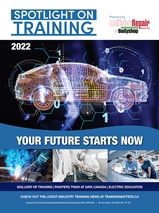- Performance improved: Product mix and cost efficiency support adjusted EBIT increase at Mercedes-Benz Cars & Vans of 105%
- Portfolio optimised : Top-end vehicle sales surge and electrification ramp-up gathers pace
- New structure established: Pure-play car & van business after successful Daimler Truck spin-off
- Dividend increased: Proposal of €5.00 per share (2020: €1.35) reflects solid cash generation
- Outlook 2022: Guidance confirms strategic progress
STUTTGART, Germany–(BUSINESS WIRE)–Mercedes-Benz Group AG (ticker symbol: MBG) achieved strong financial results for the fiscal year 2021 ended December 31, while accelerating its strategy as a pure-play manufacturer of desirable cars and vans.
In 2021, good product mix, solid net pricing, continued cost-discipline and favourable used car performance lifted the adjusted Return on Sales (RoS) for the Mercedes-Benz Cars & Vans division to 12.7% in the full year, even as the COVID-19 pandemic and semiconductor supply chain bottlenecks continued to affect the business. Since 2019 fixed costs at Mercedes-Benz Cars have fallen by 16% while revenue per unit improved by 26% to an average €49,800 per vehicle.
Mercedes-Benz achieved several technological milestones last year: The company introduced four battery electric vehicles and attained the first internationally valid system approval for SAE-Level 3 automated driving. The EQS electric flagship received strong reviews and orders for the vehicle are currently at around 20,000 of which 3,600 came in January 2022. Mercedes-Benz is preparing to roll out a raft of new electric vehicles this year, including the EQE and EQS SUV.
”2021 was a year of strategic progress for Mercedes-Benz. Three numbers illustrate how this transformation is gaining traction: Top-end vehicle sales rose by 30%, sales of electric cars surged 64%, and our adjusted EBIT increased by 105%. That’s a strong demonstration of the potential of this brand and this team. I want to extend my deepest gratitude to all our colleagues who made this excellent result possible,” said Ola Källenius, Chairman of the Board of Management of Mercedes-Benz Group AG. “With a clear agenda for this year we are confident about 2022. Aside from the relentless focus on cost efficiency and supply chain management, our strategic priorities are: Scaling electric vehicles, accelerating our car-software plans and growing our luxury business.”
On February 1, 2022 the previous Daimler AG was renamed Mercedes-Benz Group AG and Daimler Mobility AG became Mercedes-Benz Mobility AG. The former Daimler Trucks & Buses division was listed on the Frankfurt Stock Exchange on December 10, 2021. Figures within financial statements have therefore been split into continued and discontinued operations. In line with the newly formed Group divisions, the reporting structure and the prior-year figures have been adjusted accordingly. All figures are preliminary and unaudited.
In the fourth quarter, the company realized a one-time Group EBIT gain of €9.2 billion from deconsolidation, due to the spin-off of the Daimler commercial vehicle business. This one-time EBIT effect has no impact on the cash flow and no material impact on taxes. It is the perspective of the management that this is a pure valuation effect and has therefore been excluded from the basis for determining the dividend proposal.
Mercedes-Benz Group
Mercedes-Benz Group revenue reached €168 billion (2020: €154.3 billion). The share from continuing operations was €133.9 billion (2020: €121.8 billion). Group EBIT was €29.1 billion (2020: €6.6 billion), thereof the share from continuing operations was €16.0 billion (2020: €6.1 billion). Adjusted EBIT, reflecting the underlying business, was €19.2 billion (2020: €8.6 billion). Group net profit was €23.4 billion (2020: €4.0 billion). The share from continuing operations was €11.1 billion (2020: €4.0 billion).
In 2021, net profit excluding the deconsolidation result rose to €14.2 billion (2020: €4.0 billion). Earnings per share, excluding the deconsolidation result, rose by 280% to €12.89 (2020: €3.39).
|
Mercedes-Benz Group |
Q4 |
|
Q4 |
|
Change |
|
FY |
|
FY |
|
Change |
|||||||
|
|
2021 |
|
2020 |
|
21/20 |
|
2021 |
|
2020 |
|
21/20 |
|||||||
|
Revenue, in millions of € |
43,389 |
|
46,621 |
|
-7% |
|
167,971 |
|
154,309 |
|
+9% |
|||||||
|
EBIT, in millions of € |
14,557 |
|
4,598 |
|
+217% |
|
29,069 |
|
6,603 |
|
+340% |
|||||||
|
EBIT adjusted, in millions of € |
5,231 |
|
5,151 |
|
+2% |
|
19,230 |
|
8,641 |
|
+123% |
|||||||
|
Net profit/loss, in millions of € |
12,746 |
|
3,589 |
|
+255% |
|
23,3961 |
|
4,009 |
|
+484% |
|||||||
|
Earnings per share (EPS), in € |
11.82 |
|
3.26 |
|
+263% |
|
21.502 |
|
3.39 |
|
+534% |
|||||||
|
Employees (December 31) |
– |
|
– |
|
– |
|
172,4255 |
|
275,943 |
|
-38% |
|||||||
|
Net liquidity (industrial business, December 31), in millions of € |
21,005 |
|
17,855 |
|
+18% |
|
21,005 |
|
17,855 |
|
+18% |
|||||||
|
Free cash flow (industrial business)3, in millions of € |
1,961 |
|
4,751 |
|
-59% |
|
8,606 |
|
8,259 |
|
+4% |
|||||||
|
Free cash flow (industrial business) adjusted4, in millions of € |
2,267 |
|
4,894 |
|
-54% |
|
10,882 |
|
9,155 |
|
+19% |
|
1 |
Excluding the result from the deconsolidation of the Daimler commercial vehicle business, net profit amounted to €14,180 million. |
|
|
2 |
Excluding the result from the deconsolidation of the Daimler commercial vehicle business, EPS amounted to €12.89. |
|
|
3 |
Including former Daimler Trucks & Buses division. |
|
|
4 |
Including former Daimler Trucks & Buses division. The free cash flow of the former Daimler Trucks & Buses division for 2021 amounted to €726 million until the spin-off and hive down went into effect on 9 December 2021. |
|
|
5 |
As at 31 December 2021 excluding the employees of the spun-off Daimler commercial vehicle business. |
Investments, free cash flow and liquidity
Thanks to a tight grip on working capital and investments, the strong profitability translated into a solid level of free cash flow. The free cash flow of the industrial business was €8.6 billion (2020: €8.3 billion), including important upfront investments in future products. The adjusted free cash flow of the industrial business was €10.9 billion (2020: €9.2 billion). The net liquidity of the industrial business amounted to €21.0 billion (end of Q3 2021: €23.5 billion/end of 2020 €17.9 billion), even after the spin-off of Daimler Truck. The Group’s investments in property, plant and equipment in the full year totaled €3.8 billion from continued operations (2020: €4.9 billion). Research & development expenditure for 2021 for continued activities amounted to €7.7 billion (2020: €7.2 billion).
Divisional results
Sales at the Mercedes-Benz Cars & Vans division decreased by 5% to 2,330,169 vehicles (2020: 2,461,884). Mercedes-Benz passenger car unit sales decreased to 2,054,962 (2020: 2,164,187), mainly due to the global supply constraints of semiconductors. However, the Top-end vehicles, which include Mercedes‑Maybach, Mercedes-AMG, G-Class, S-Class, GLS and EQS, posted a new sales record in 2021, underscoring the strength of the world’s most valuable luxury car brand. Mercedes-Maybach sales in China have risen to more than 1,000 vehicles a month since June last year, with the exception of last October, when supplies were constrained. At Mercedes-Benz Vans, in line with the strategy to focus on EV’s, battery electric vehicle sales more than doubled. The adjusted Return on Sales (RoS) for Mercedes-Benz Cars and Vans rose to 12.7% from 6.9% in the year-earlier period.
|
Mercedes-Benz Cars & Vans |
|
Q4 |
|
Q4 |
|
Change |
|
FY |
|
FY |
|
Change |
||||||
|
|
|
2021 |
|
2020 |
|
21/20 |
|
2021 |
|
2020 |
|
21/20 |
||||||
|
Sales, in units |
611,920 |
|
|
760,895 |
|
|
-20% |
|
|
2,330,169 |
|
|
2,461,884 |
|
|
-5% |
||
|
Sales Mercedes-Benz Cars, in units |
500,421 |
|
|
641,146 |
|
|
-22% |
|
|
1,943,930 |
|
|
2,087,232 |
|
|
-7% |
||
|
Sales Mercedes-Benz Vans, in units |
111,499 |
|
|
119,749 |
|
|
-7% |
|
|
386,239 |
|
|
374,652 |
|
|
+3% |
||
|
Revenue, in millions of € |
29,007 |
|
|
30,613 |
|
|
-5% |
|
|
109,648 |
|
|
98,576 |
|
|
+11% |
||
|
EBIT, in millions of € |
4,106 |
|
|
3,669 |
|
|
+12% |
|
|
13,626 |
|
|
5,172 |
|
|
+163% |
||
|
EBIT adjusted, in millions of € |
4,294 |
|
|
4,066 |
|
|
+6% |
|
|
13,914 |
|
|
6,802 |
|
|
+105% |
||
|
Return on Sales (RoS), in % |
14.2% |
|
|
12.0% |
|
|
+2.2%pts |
|
|
12.4% |
|
|
5.2% |
|
|
+7.2%pts |
||
|
Return on Sales (RoS) adjusted, in % |
14.8% |
|
|
13.3% |
|
|
+1.5%pts |
|
|
12.7% |
|
|
6.9% |
|
|
+5.8%pts |
||
|
Cash Flow Before Interest and Tax (CFBIT), in millions of € |
2,048 |
|
|
3,730 |
|
|
-45% |
|
|
10,170 |
|
|
7,048 |
|
|
+44% |
||
|
Cash Flow Before Interest and Tax (CFBIT) adjusted, in millions of € |
2,234 |
|
|
3,855 |
|
|
-42% |
|
|
12,295 |
|
|
7,917 |
|
|
+55% |
||
|
Cash Conversion Rate (CCR) adjusted1 |
0.5 |
|
|
0.9 |
|
|
– |
|
|
0.9 |
|
|
1.2 |
|
|
– |
|
1 |
Ratio of CFBIT adjusted to EBIT adjusted. |
At Mercedes-Benz Mobility, new business fell by 6% to €63.6 billion (2020: €67.8 billion) due to lower penetration rates and the shortage of semiconductors. The division’s EBIT amounted to €3.5 billion (2020: €1.4 billion). The portfolio decreased due to the Truck spin-off and lower dealer stock. With its financial services products the division supported the ramp up of the electric vehicle sales. Adjusted EBIT more than doubled to €3.4 billion (2020: €1.6 billion) and adjusted return on equity reached 22%, which is above the adjusted prior-year figure of 10.9%. The lower cost of credit risks and a higher interest margin due to improved funding conditions contributed towards the result.
|
Mercedes-Benz Mobility |
Q4 |
|
Q4 |
|
Change |
|
FY |
|
FY |
|
Change |
|||||||
|
|
2021 |
|
2020 |
|
21/20 |
|
2021 |
|
2020 |
|
21/20 |
|||||||
|
Revenue, in millions of € |
7,246 |
|
7,271 |
|
-0% |
|
27,941 |
|
27,699 |
|
+1% |
|||||||
|
New business, in millions of € |
15,043 |
|
18,965 |
|
-21% |
|
63,631 |
|
67,786 |
|
-6% |
|||||||
|
Contract volume (December 31), in millions of € |
133,687 |
|
150,553 |
|
-11% |
|
133,687 |
|
150,553 |
|
-11% |
|||||||
|
EBIT, in millions of € |
882 |
|
584 |
|
+51% |
|
3,493 |
|
1,436 |
|
+143% |
|||||||
|
EBIT adjusted, in millions of € |
885 |
|
623 |
|
+42% |
|
3,449 |
|
1,595 |
|
+116% |
|||||||
|
Return on Equity (RoE), in % |
21.6% |
|
16.2% |
|
+5.4%pts |
|
22.3% |
|
9.8% |
|
+12.5%pts |
|||||||
|
Return on Equity (RoE) adjusted, in % |
21.7% |
|
17.3% |
|
+4.4%pts |
|
22.0% |
|
10.9% |
|
+11.1%pts |
Dividend
At the Annual General Meeting on April 29, 2022, the Board of Management and the Supervisory Board will propose a dividend of €5.00 per share (2020: €1.35), thereof approximately €0.70 covers the dividend share of Daimler Trucks & Buses, as Daimler Truck Holding AG will not pay out a separate dividend to its shareholders for 2021. Therefore, a dividend of €4.30 is the reference point going forward for Mercedes-Benz Group. For 2021 the total payout will amount to €5.35 billion (2020: €1.4 billion).
Outlook
Semiconductors
Mercedes-Benz expects that supply constraints related to semiconductors will continue to impact the market in 2022. Visibility on semiconductor supply is improving and capacity is gradually increasing. However, there is a high level of volatility and selective bottlenecks remain. Therefore, it is currently not possible to give a prognosis about when the semiconductor supply bottlenecks will be cleared. The company expects the situation to stabilize in 2022 compared to last year. In line with the Mercedes-Benz strategy, deliberate prioritization of top-end and electric vehicles continues. Furthermore, deep sourcing and interaction has been intensified with direct suppliers, as well as with the semiconductor suppliers, in order to make the system more robust in the future. Together with suppliers, Mercedes-Benz is continually working to secure capacity and develop the technology to enable new chip generations. This includes more concrete agreements on supply quantities, extended planning cycles, as well as the development of a safety stock at various points of the supply chain and multiple supply sources.
Mercedes-Benz Cars
Demand for Mercedes-Benz products remains very strong. However, due to uncertainties surrounding supply chain constraints, a cautious approach has been taken to forecasting sales. The company expects unit sales of Mercedes-Benz Cars to be slightly above 2021. The sales mix is expected to remain favourable, with top-end vehicle sales increasing by more than 10%. Net pricing is anticipated to improve further, but it will not fully offset the raw material headwinds which are expected to increase in 2022 compared with last year. Used car results are expected to normalise but remain on a good level. Investments into property, plant and equipment as well as research and development costs are expected to be slightly above the prior year, mainly because of investments into vehicle platforms MMA and AMG.EA. The cash conversion rate for Mercedes-Benz Cars will be in the corridor of 0.8 and 1.0. Mercedes-Benz Cars expects an adjusted return on sales of 11.5% to 13% for the year 2022.
Mercedes-Benz Vans
Mercedes-Benz Vans expects sales to be slightly above last year’s level. Despite strong demand Mercedes-Benz Vans has, in line with its cars division, again chosen a cautious approach to forecasting sales, given the supply-chain uncertainties faced by the industry. Investments into property, plant and equipment and research and development expenditures will be significantly above last year, when expenditures were relatively low. A new fully-fledged electric platform to cover all segments, VAN.EA, is being developed to hit markets by the mid of this decade. At the same time, existing combustion platforms are being upgraded. The adjusted cash conversion rate is expected to be 0.6 to 0.8. Mercedes-Benz Vans anticipates an adjusted return on sales of 8% to 10% for 2022.
Mercedes-Benz Mobility
For Mercedes-Benz Mobility the adjusted return on equity corridor is expected to be 16% to 18%, which is significantly lower than in 2021. This is due to an expected normalisation of cost of credit risks and headwinds in the form of slightly higher market interest rates in 2022. Furthermore, last year’s results benefited from a positive one-time effect from a legal case provision.
Mercedes-Benz Group
Mercedes-Benz Group anticipates revenue in 2022 slightly above the previous year’s figure from continued operations, which is without the Daimler Trucks & Buses business. Based on the expectation of a slight increase in revenue in 2022, the company anticipates that EBIT from continued operations will be at the prior-year level.In 2022 the company sees Cash Flow Before Interest and Taxes (CFBIT) Automotive and CFBIT Automotive adjusted all-in-all at about the previous year’s level. This year the company expects cash taxes to return to more normal levels and therefore to increase significantly versus 2021 levels, due to lower tax loss carry forwards. The company therefore expects the free cash flow from the Industrial Business in 2022 to be slightly below the 2021 level of €7.9 billion from continued operations.
CO2 emissions of the new car fleet in Europe
Internal figures show that in 2021 the new car fleet’s average CO2 emissions in Europe (European Union, Norway and Iceland) fell to 115 grams per kilometre, below the preliminary regulatory target of 125 grams. Mercedes-Benz expects to fulfil European emissions targets also in 2022 as the company continues to roll out its fleet of electric vehicles.
Link to press release “sales figures 2021” (January 7, 2022):
group-media.mercedes-benz.com/annual sales
Link to capital market presentation on full year 2021:
group.mercedes-benz.com/results-2021
Link to the replay of the event:
media.mercedes-benz.com/results-2021
Pictures of the Annual Results Conference 2021 will be available here:
group-media.mercedes-benz.com
The figures in this document are preliminary and have not yet been approved by the Supervisory Board nor audited by the external auditor.
Forward-looking statements:
This document contains forward-looking statements that reflect our current views about future events. The words “anticipate,” “assume,” “believe,” “estimate,” “expect,” “intend,” “may,” ”can,” “could,” “plan,” “project,” “should” and similar expressions are used to identify forward-looking statements. These statements are subject to many risks and uncertainties, including an adverse development of global economic conditions, in particular a decline of demand in our most important markets; a deterioration of our refinancing possibilities on the credit and financial markets; events of force majeure including natural disasters, pandemics, acts of terrorism, political unrest, armed conflicts, industrial accidents and their effects on our sales, purchasing, production or financial services activities; changes in currency exchange rates, customs and foreign trade provisions; a shift in consumer preferences towards smaller, lower-margin vehicles; a possible lack of acceptance of our products or services which limits our ability to achieve prices and adequately utilize our production capacities; price increases for fuel or raw materials; disruption of production due to shortages of materials, labour strikes or supplier insolvencies; a decline in resale prices of used vehicles; the effective implementation of cost-reduction and efficiency-optimization measures; the business outlook for companies in which we hold a significant equity interest; the successful implementation of strategic cooperations and joint ventures; changes in laws, regulations and government policies, particularly those relating to vehicle emissions, fuel economy and safety; the resolution of pending governmental investigations or of investigations requested by governments and the outcome of pending or threatened future legal proceedings; and other risks and uncertainties, some of which are described under the heading “Risk and Opportunity Report” in the current Annual Report or in the current Interim Report. If any of these risks and uncertainties materializes or if the assumptions underlying any of our forward-looking statements prove to be incorrect, the actual results may be materially different from those we express or imply by such statements. We do not intend or assume any obligation to update these forward-looking statements since they are based solely on the circumstances at the date of publication.
Mercedes-Benz Group at a glance
Mercedes-Benz Group AG is one of the world’s most successful automotive companies. With Mercedes-Benz AG, the Group is one of the leading global suppliers of premium and luxury cars and vans. Mercedes-Benz Mobility AG offers financing, leasing, car subscription and car rental, fleet management, digital services for charging and payment, insurance brokerage, as well as innovative mobility services. The company founders, Gottlieb Daimler and Carl Benz, made history by inventing the automobile in 1886. As a pioneer of automotive engineering, Mercedes-Benz sees shaping the future of mobility in a safe and sustainable way as both a motivation and obligation. The company’s focus therefore remains on innovative and green technologies as well as on safe and superior vehicles that both captivate and inspire. Mercedes-Benz continues to invest systematically in the development of efficient powertrains and sets the course for an all-electric future: The brand with the three-pointed star pursues the goal to go all-electric, where market conditions allow. Shifting from electric-first to electric-only, the world’s pre-eminent luxury car company is accelerating toward an emissions-free and software-driven future. The company’s efforts are also focused on the intelligent connectivity of its vehicles, autonomous driving and new mobility concepts as Mercedes-Benz regards it as its aspiration and obligation to live up to its responsibility to society and the environment. Mercedes-Benz sells its vehicles and services in nearly every country of the world and has production facilities in Europe, North and Latin America, Asia and Africa. In addition to Mercedes-Benz, the world’s most valuable luxury automotive brand (source: Interbrand study, 20 Oct. 2021), Mercedes-AMG, Mercedes-Maybach, Mercedes-EQ and Mercedes me as well as the brands of Mercedes-Benz Mobility: Mercedes-Benz Bank, Mercedes-Benz Financial Services and Athlon. The company is listed on the Frankfurt and Stuttgart stock exchanges (ticker symbol MBG). In 2021, the Group had a workforce of around 172,000 and sold 2.3 million vehicles. Group revenues amounted to €168.0 billion and Group EBIT to €29.1 billion.
Contacts
Tobias Just, +49 711 17 41341, tobias.just@mercedes-benz.com
Edward Taylor, +49 176 30 94 1776, edward.taylor@mercedes-benz.com
Han Tjan, +1 212 909-9063, han.tjan@daimler.com
Andrea Berg, +1 917 667-2391, andrea.a.berg@daimler.com
Further information on Mercedes-Benz Group AG is available at:
group-media.mercedes-benz.com and group.mercedes-benz.com



















